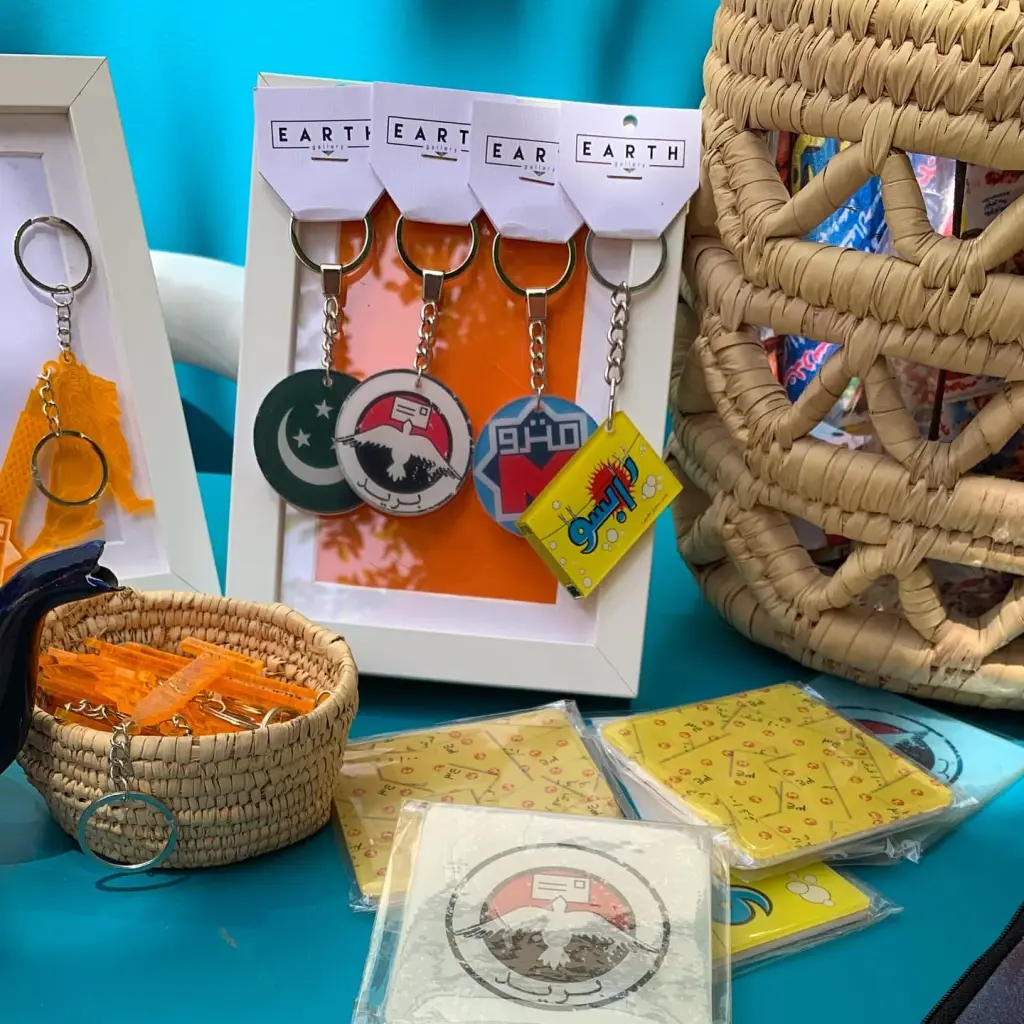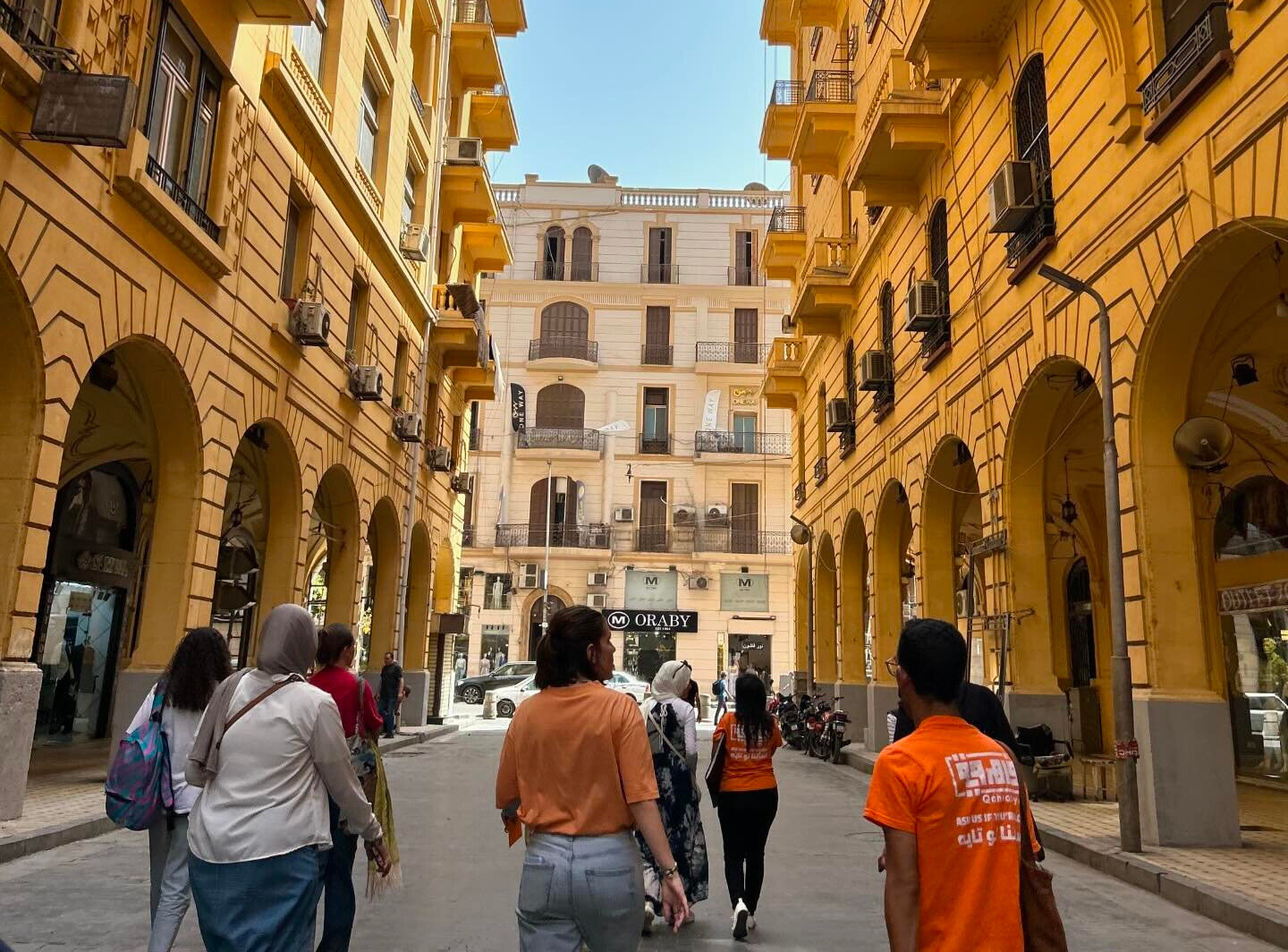By Devon Murray
It started with a list. Ten, 20, 50 must- see sites in Cairo -- but not the kind you'd ever find on the internet.
In her early career at a multinational company, Samia El Khodary '16 was asked the same question by her international colleagues: "Where should I go in Cairo?" "The city's abundance of heritage and culture is a blessing and a curse," El Khodary reflects. "While there are so many things to do and see, the options can be quite overwhelming."
To address this, she made a list, first called "The Hidden Gems" and later "Fakhfakhina" [fruit cocktail]. "I wanted to show visitors more than Cairo's traditional sites like the pyramids and Khan El Khalili," El Khodary says.
She highlighted unique shows and spots that stood out to her, such as Zar ceremony performances at the Egyptian Center for Culture and Arts and a shop that specializes in bookbinding tucked away near the Sultan al-Ghuri Complex in Old Cairo.
With the help of friends and her graphic design skills, El Khodary transformed her list into an official tour, complete with an eye-catching orange logo. The name Qahrawya, which she and her team brainstormed during many sleepless nights, reflects the inclusive nature of her tours. "Qahrawya means Cairene, encompassing Egyptians, expats and visitors alike -- and these tours are for everyone," she explains.
Today, Qahrawya offers 11 themed tours, ranging from film and contemporary art to obscure places like the City of the Dead and Cairo's Armenian community. "We aim to present a different narrative about the city -- beyond pyramids and mummies -- and connect participants with the places, initiatives and individuals who contribute to this narrative," El Khodary says.
City Bonds
El Khodary's relationship with Cairo began from a young age through school projects and volunteer work with her family. This connection deepened during her time at AUC New Cairo, where she remained connected with the city despite the added distance from traditional neighborhoods. She recalls: "Many of my AUC classmates still lived in neighborhoods like downtown or Heliopolis, so unlike many AUCians today, we weren't going from compound to compound," she said. "We still experienced life in Cairo, even through the challenges of the revolution."
When someone says, 'I've been living downtown for ages, but I never knew that these places existed,' that is music to my ears.

Like many who call Cairo home, El Khodary has a complicated relationship with the city. On one hand, it is where she developed her passion for art and history and channeled it into Qahrawya. Yet she often finds herself challenged in terms of obtaining special permits for a specific trip or convincing skeptics that yes, a walking tour is in fact doable in the city's most crowded areas.
Despite the challenges, her affection for Cairo shines through. "It's love and hate, -- even when they drive me crazy," she says. "They always manage to make me laugh, no matter what crisis I am facing."
This love keeps El Khodary and Qahrawya going. "As a startup, we have a lot of bad days," she admits. "What makes it worth it is hearing how our tours change a person's perspective on the city. When someone says, 'I've been living downtown for ages, but I never knew that these places existed,' that is music to my ears."
Creative Haven
El Khodary's headquarters are located in downtown Cairo behind the Said Halim Pasha Palace, which is more commonly known as the Champollion Palace. "The palace was actually built as a gift for Said Halim Pasha's wife; however, she refused to live in it after its completion," says El Khodary.
Qahrawya is nestled into a small room in an old apartment now shared by contemporary artists and a talkative cat named Pasha. The space is a blend of old and new, with a cluttered shelf lined with Arabic and English books covering history and art next to a fridge decked out in magnets from cities like Cairo, Prague and beyond. Gesturing to the books, El Khodary says: "Every day, I am learning new information and developing my skills as a storyteller. It is important to me that I never give a monotonous presentation while leading a tour."

A table showcases Cairo-themed merchandise designed by Qahrawya's production team, including stickers, keychains and other small items. Despite having double majored in economics and business administration at AUC, El Khodary always found herself drawn to art. "I'm a designer now, but I've always considered myself more of an art receiver. I try to incorporate artistic elements into our tours, using visual aids and creative touches," she says. "However, we don't beautify anything. We present everything as it is from a local perspective."


